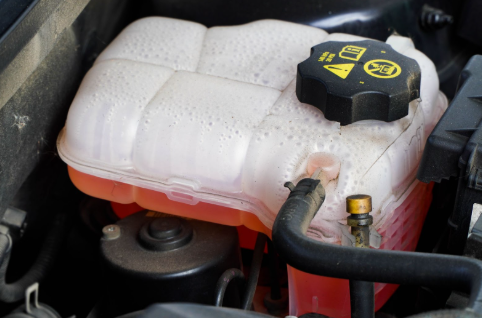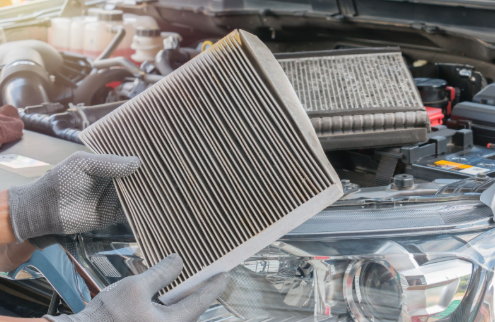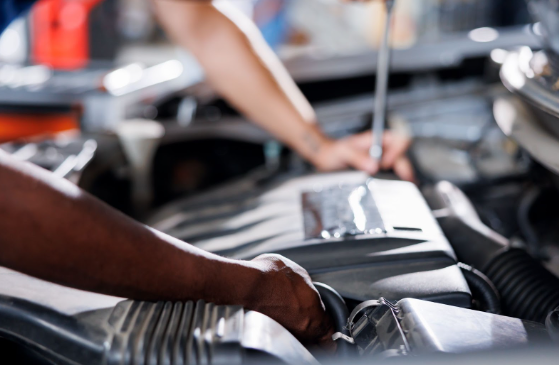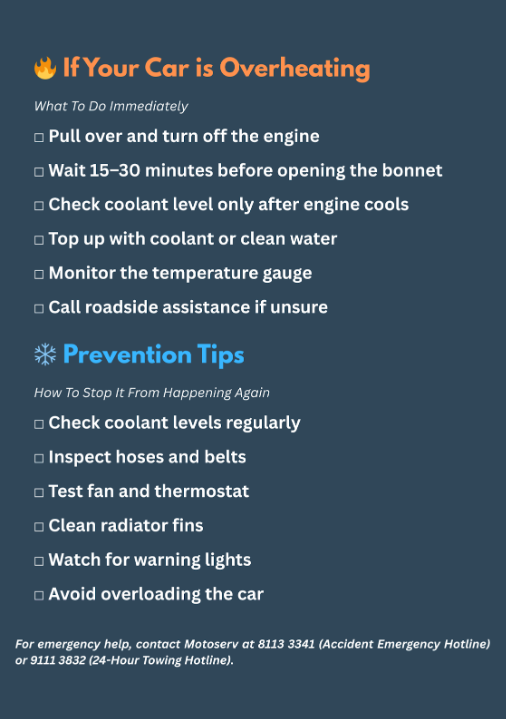
Your dashboard’s screaming. The bonnet’s steaming. What now?
The first thing to do is not panic. A car overheat can catch anyone off guard, especially if you’re not well-versed in how your vehicle works.
But that doesn’t mean you’re stuck waiting by the roadside with no clue. Understanding what causes your car to overheat and knowing what to do can save you time, money, and a whole lot of stress.
This guide breaks it all down. Whether you’ve got an older vehicle or a relatively new one, here’s what you need to do when your car overheats.
A car overheat happens when the engine gets too hot and the cooling system fails to regulate the temperature. But what causes that failure?
Here are some of the most common (and often overlooked) culprits:

Coolant, also known as antifreeze, helps regulate your engine’s temperature by absorbing and dissipating heat.
Without enough of it, the engine can’t maintain a safe operating temperature, especially under heavy loads or during long drives in traffic.
If you’re constantly topping it up, there may be a hidden leak or deeper issue.
The thermostat is a valve that opens and closes to control coolant flow. If it gets stuck in the closed position, coolant can’t circulate, and heat builds up fast.
This often happens suddenly and can lead to rapid overheating even on short trips.

Your radiator acts like the engine’s cooling tower. If it’s clogged with debris or has internal corrosion, it will not cool the circulating fluid properly.
A leaking radiator can also reduce pressure in the cooling system, making it harder for coolant to do its job.
The water pump circulates coolant throughout the engine. If it breaks down, coolant sits stagnant, and the engine begins to heat up fast.
A worn or damaged pump may also cause noise, leaks, or low coolant flow. These are signals that shouldn’t be ignored.
Most modern vehicles rely on electric fans that kick in when temperatures rise. If the fan motor burns out, the relay fails, or a fuse blows, the fan may not engage.
This is especially problematic in traffic jams, where airflow through the engine bay is minimal.
Coolant travels through hoses that link the engine, radiator, and different parts of the cooling system. Over time, these hoses can crack, loosen, or degrade.
Even small leaks can cause gradual coolant loss, often going unnoticed until the engine starts overheating.
It’s worth noting that Singapore’s hot and humid climate puts extra pressure on your vehicle’s cooling system.
The combination of peak hour traffic jams, high ambient temperatures, and extended idling creates the perfect conditions for a car to overheat. Especially if the system is already compromised.
Stay ahead of car troubles before they ruin your day. Drop by Motoserv for a quick, friendly check-up, so you can drive with peace of mind. With branches across Singapore, expert help is always just around the corner. Drop us a message on WhatsApp if you need any car-related assistance.
Read more: Car Cooling System Maintenance: How Often Do You Need To Do It?

The moment you see steam, a rising temperature gauge, or warning lights, act fast – but stay calm. Here’s what to do, step by step:
Find a safe spot to stop, ideally away from traffic. Turning off the engine stops it from generating more heat. The sooner you do this, the better your chances of avoiding serious damage to your engine.
It may be tempting to check inside, but opening the bonnet immediately is dangerous. The engine bay could be extremely hot.
Wait at least 15 to 30 minutes for everything to cool. Steam, pressure, and hot fluid can cause severe burns.
After the engine has cooled down, check the coolant tank. It’s usually transparent and located near the radiator.
If the level is below the “MIN” mark, you may have found the issue. But never open the radiator cap while the engine is hot. The pressure inside can cause hot coolant to spray out.
If coolant is available, pour it slowly into the reservoir. If not, you can use clean water as a temporary solution.
This may help bring the engine temperature down just enough to get you to the nearest workshop. But don’t expect it to fix the problem completely.
Read more: How to Add Coolant to Car
Start the engine and monitor the temperature gauge. If it stays in the normal range, you can drive to a nearby workshop.
But if it starts climbing again, stop immediately. It’s safer to call a tow truck than risk permanent engine damage.
Ignoring these signs can lead to severe engine damage or even engine failure.
Is your car still overheating after following the steps above? No worries, call our 24-hour towing hotline at 9111 3832 and we’ll tow your car to the nearest Motoserv service centre.
An overheating engine can cause a blown head gasket, warped cylinders, or even a cracked engine block. Repairs like these cost thousands of dollars and often take days.
That’s why it’s always better to act fast and get your vehicle checked as soon as possible.
Not sure what’s causing the overheating? Our expert mechanics at Motoserv can help. From quick inspections to full diagnostics, we’ve got the tools and experience to spot the issue before it becomes serious. Book a visit with us today, we’ll help you stay safe and worry-free on the road.
Read more: Complete Guide On Car Repair & Service

You don’t need to be a car whiz to keep your vehicle from overheating. Here’s how to prevent it:
Open the bonnet and take a quick look at the coolant reservoir. If the level is low, top it up with the right type of coolant.
For best results, flush and change the coolant every two years or according to your car’s maintenance schedule.
Look for visible cracks, swelling, or loose connections. These parts keep your cooling system running efficiently. A worn-out hose can leak coolant without you noticing until it’s too late.
These components help regulate engine temperature. If they fail, your engine may overheat even if coolant levels are fine.
Have them checked during routine servicing, especially before long drives or road trips.
Dirt, leaves, or road grime can block airflow through the radiator. Over time, this reduces its cooling ability. A professional clean keeps it working as it should.
Your dashboard is your first line of defence. Never ignore temperature warnings or check engine lights. They’re there for a reason.
Read more: Car Service Tips – A Guide On Car Warning Lights
Excess weight causes your engine to put in more effort than necessary. If you’re planning a heavy load, make sure your cooling system is in good shape first.
Routine maintenance takes just a few minutes each month. But, it can save you hours of frustration and hundreds in repair bills later on.
Think overheating only happens in older vehicles? Think again. Even newer cars can overheat due to faulty components, neglected maintenance, or manufacturing defects.
That’s why it’s crucial to keep up with regular inspections, regardless of your car’s age. Prevention is always cheaper than repair.
Whether you’re stuck by the roadside or want to stay prepared, here’s a quick reference checklist to keep on hand:

Save this list in your phone’s notes or take a screenshot so you’ll have it when you need it most.
For immediate roadside help in Singapore, contact Motoserv at 8113 3341 (Accident Emergency Hotline) or 9111 3832 (24-Hour Towing Hotline).
An overheating engine is never a good sign, but it doesn’t have to ruin your day. Knowing what to do and how to prevent it helps you stay calm, safe, and in control.
You don’t need to be a car expert. Just a little knowledge and routine care will keep your engine running smoothly for years.
Want more tips and tricks on car care? Browse our articles. Or, if you have any questions, feel free to drop us a WhatsApp message.

From hybrid car repairs and battery replacements to aircon servicing, ADAS calibration, and full car maintenance packages, we’ve got everything your car needs.
We have outlet service all across Singapore. Contact us today to book your service.
WhatsApp us